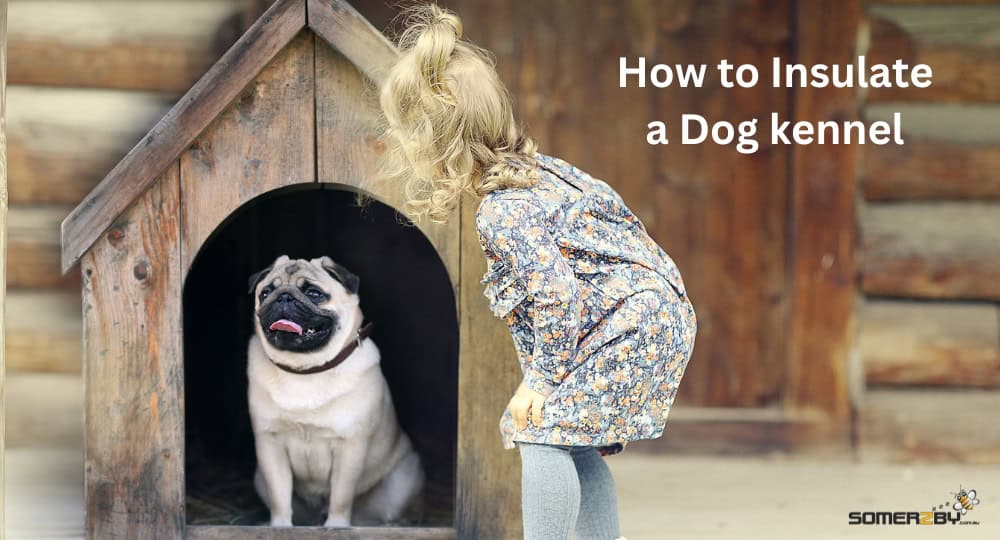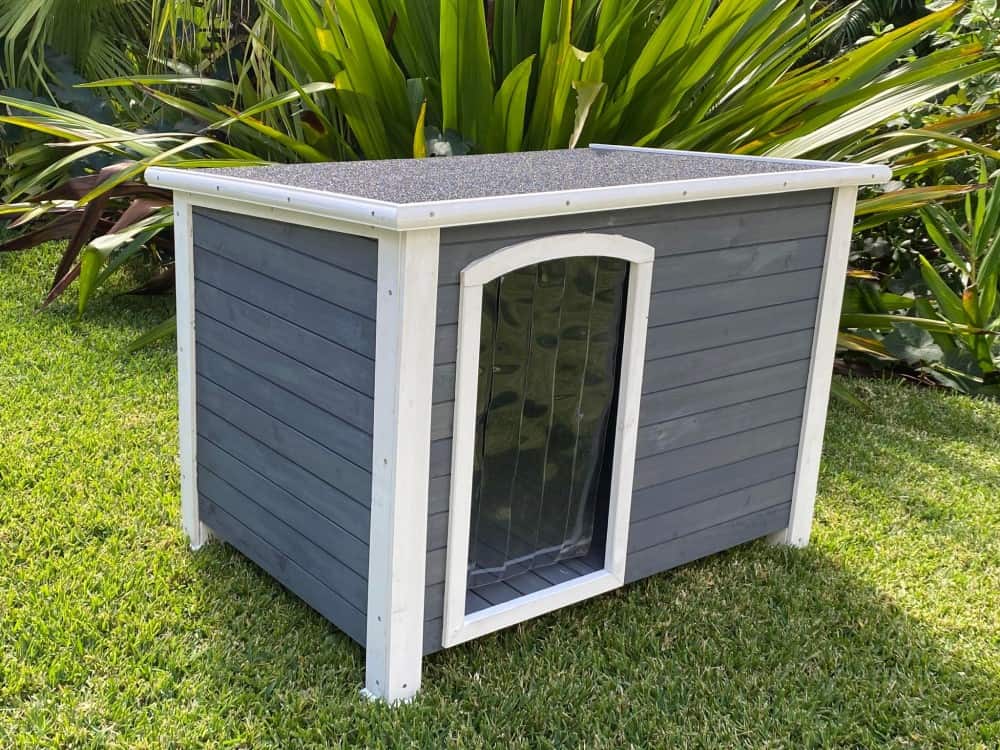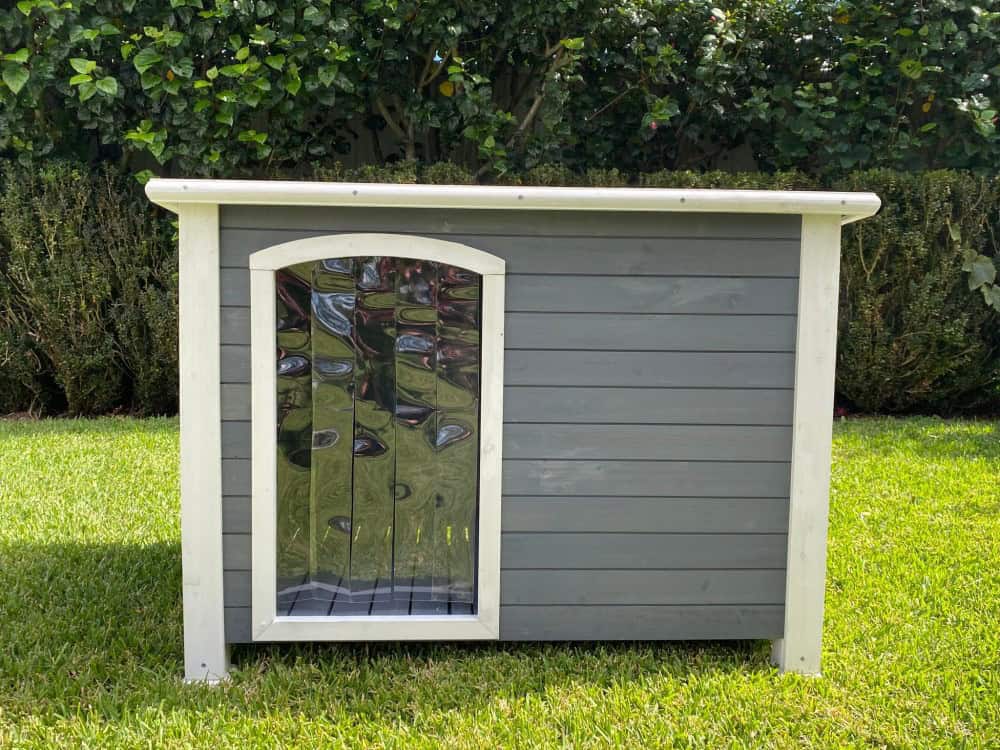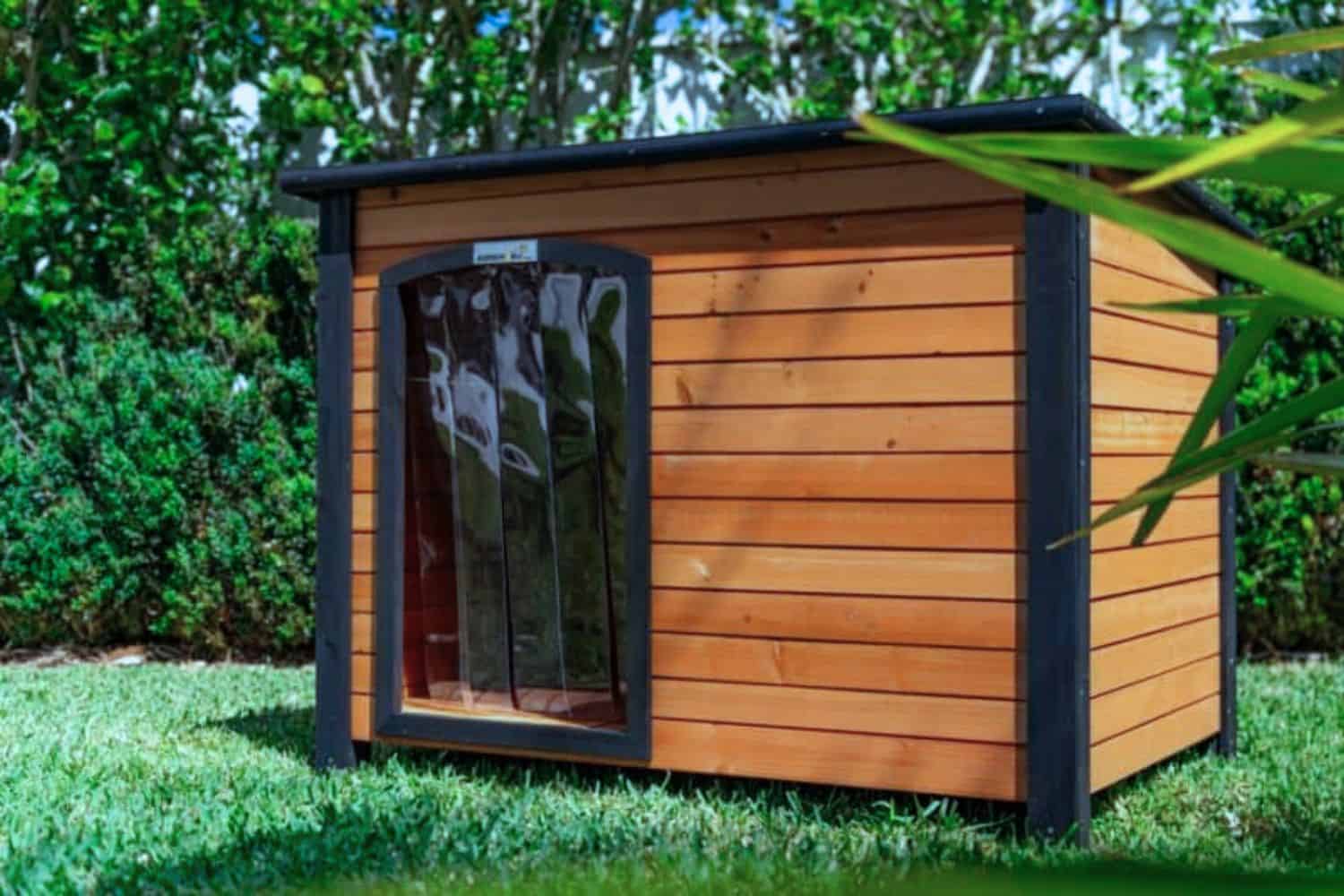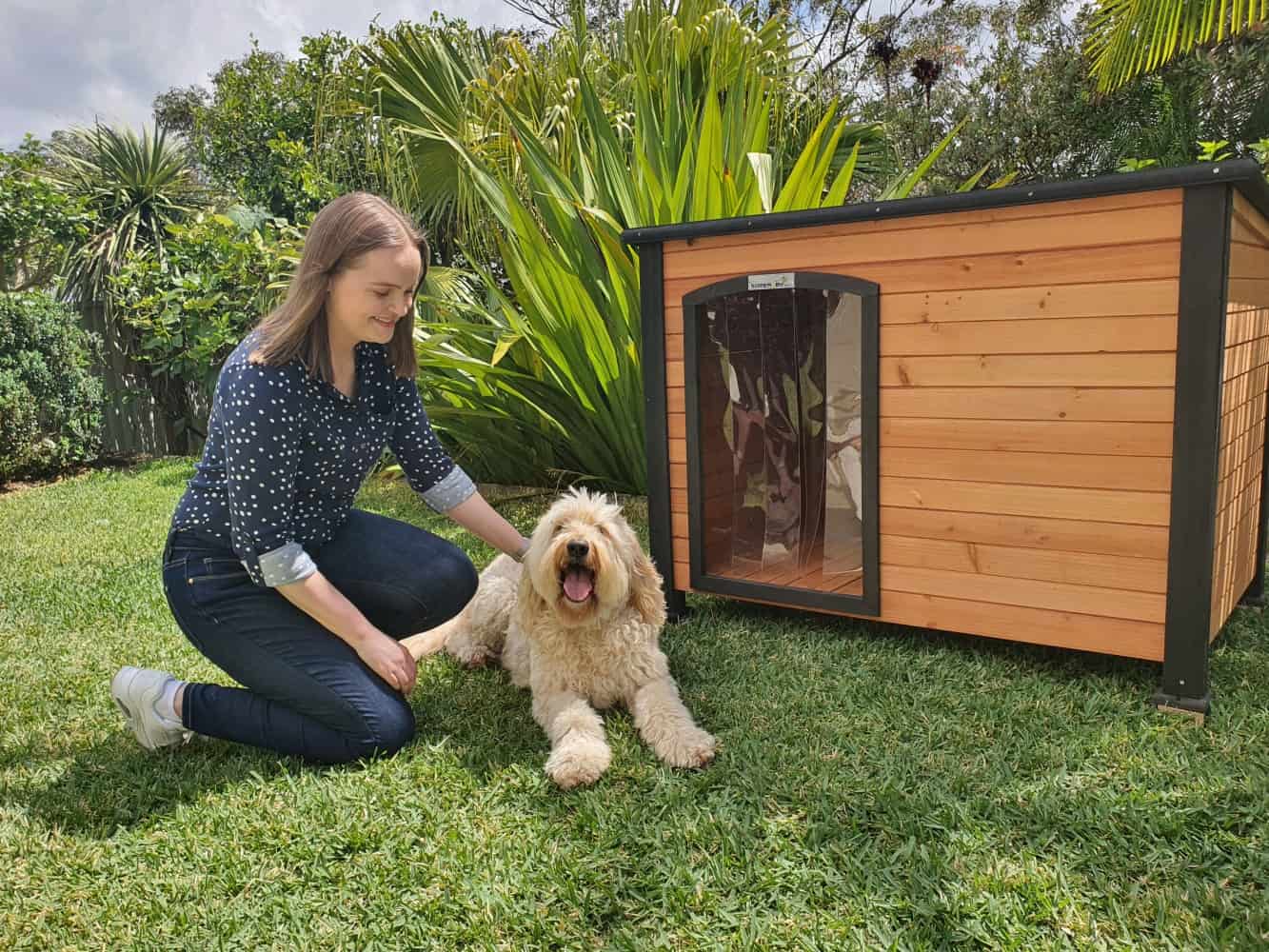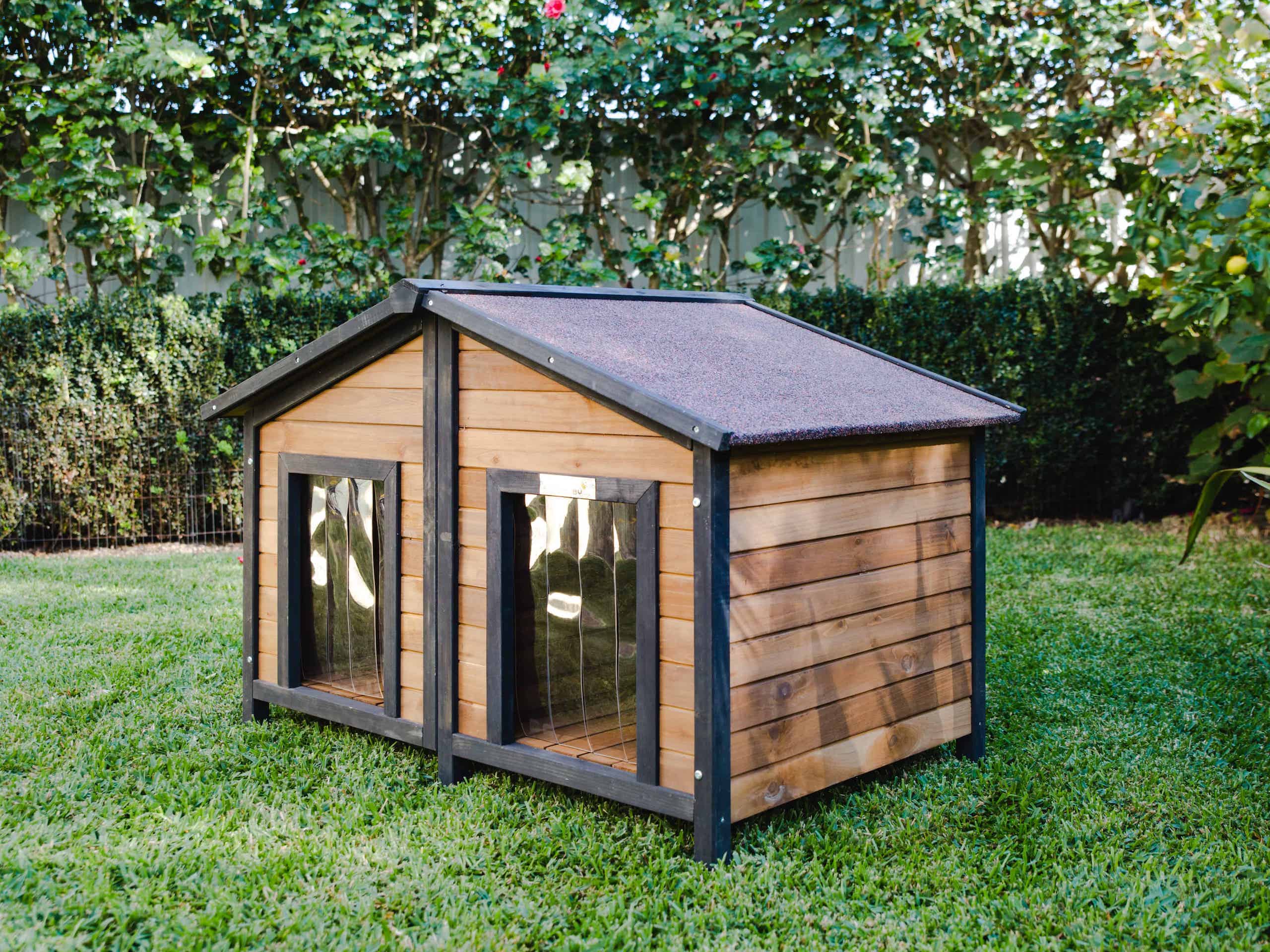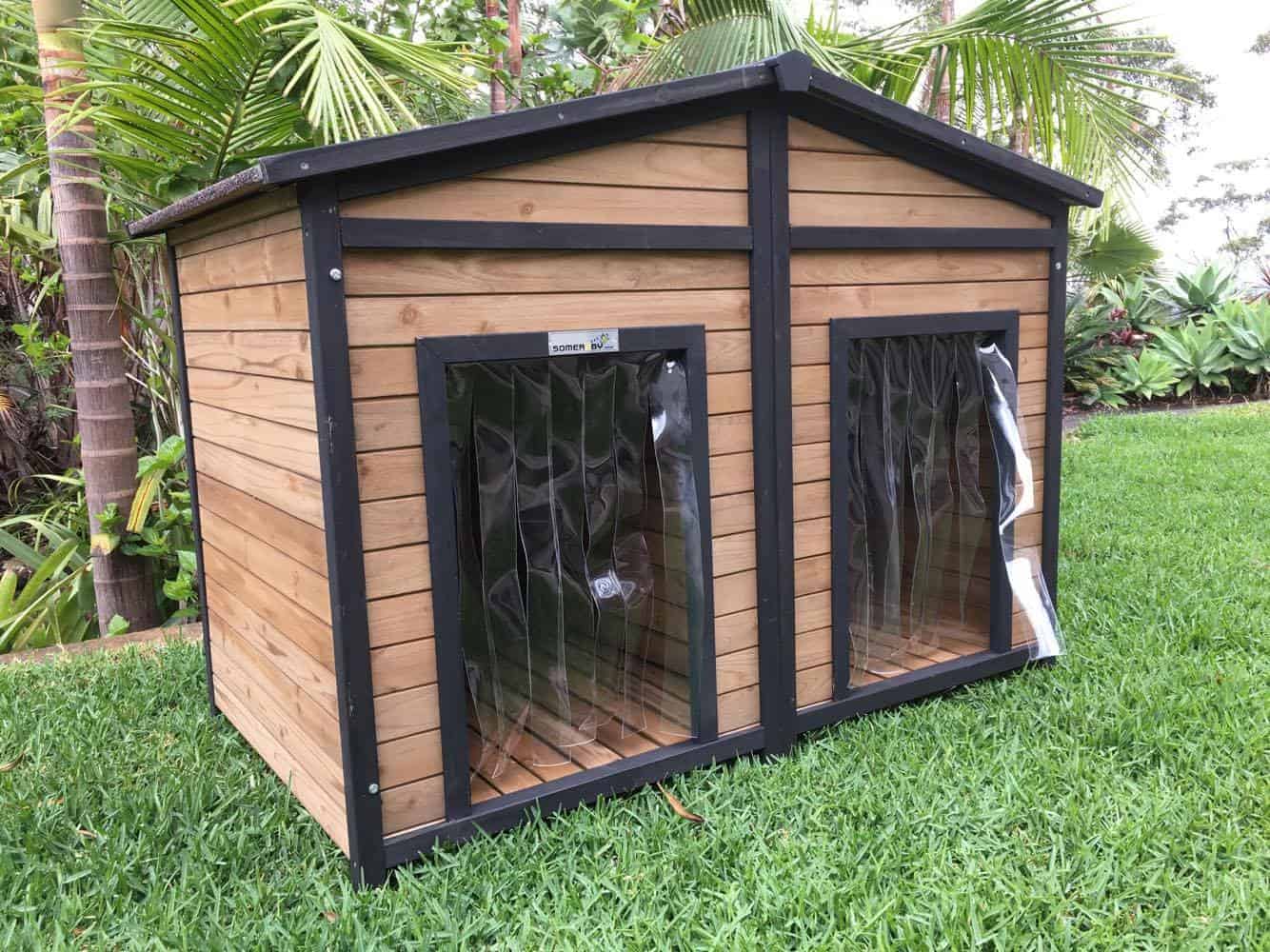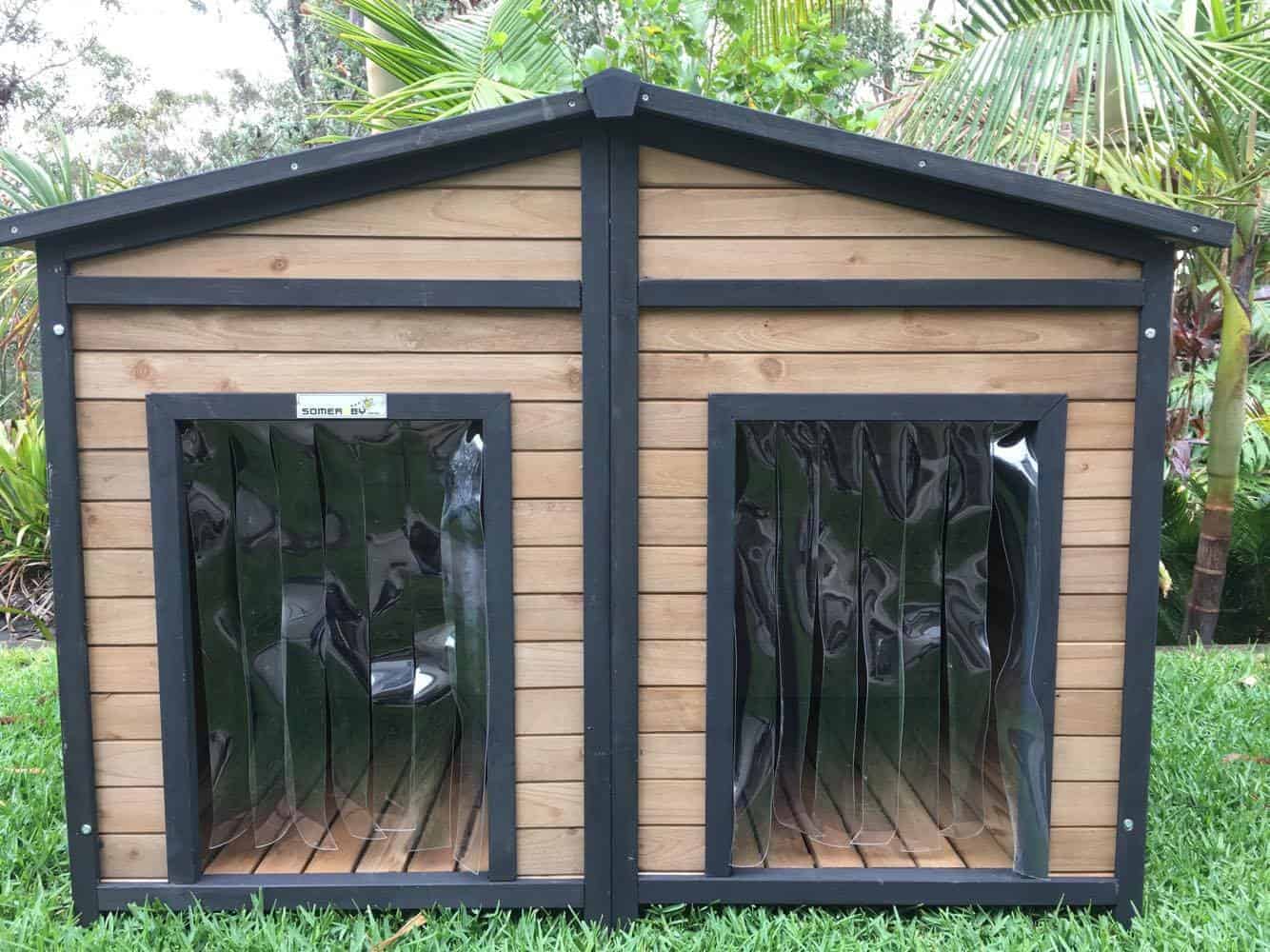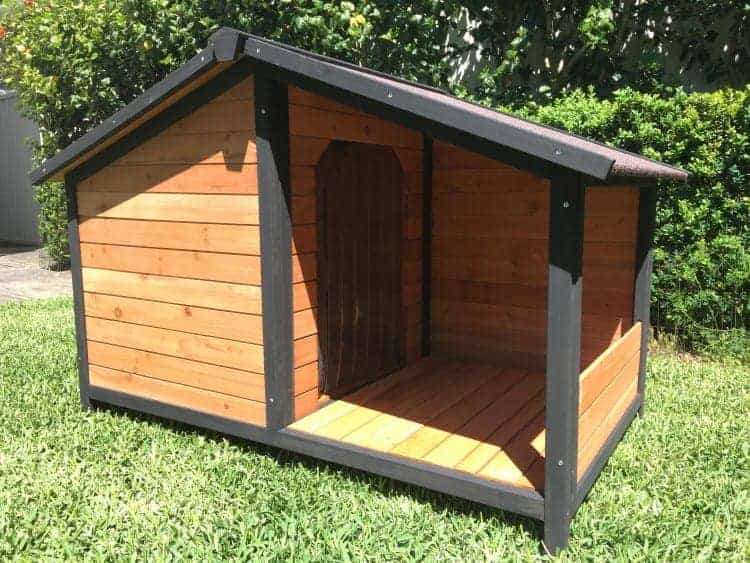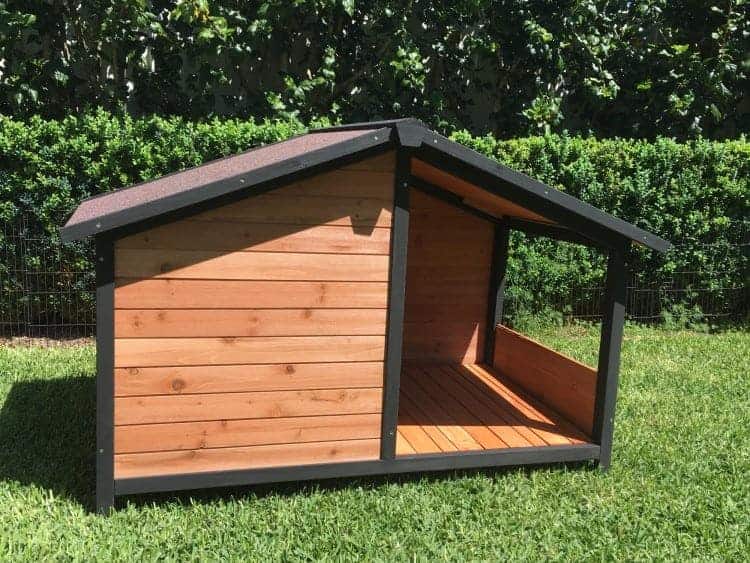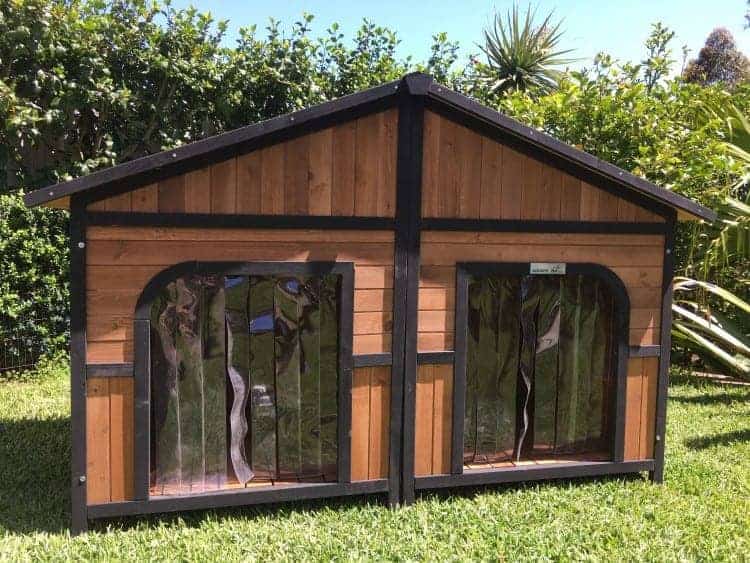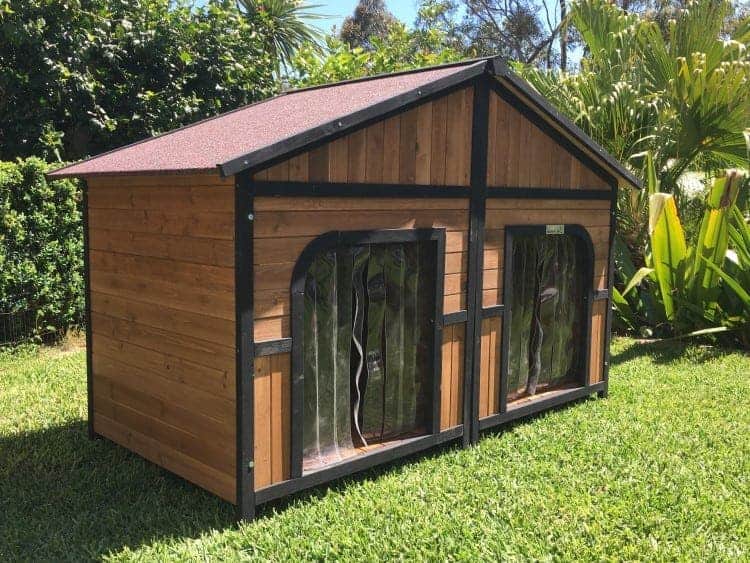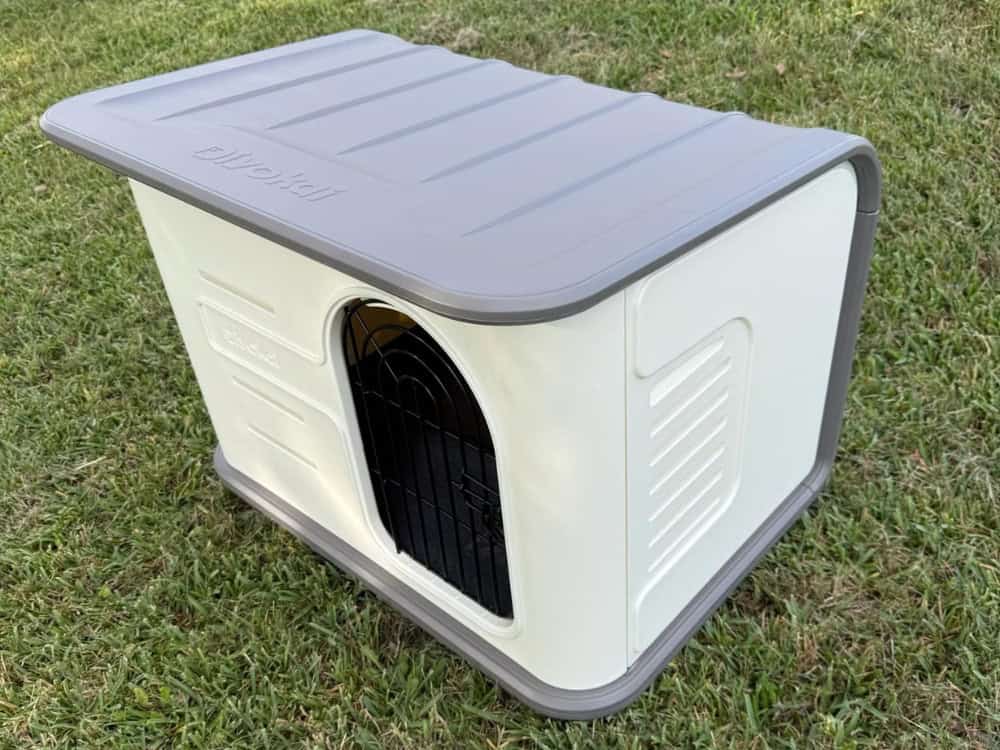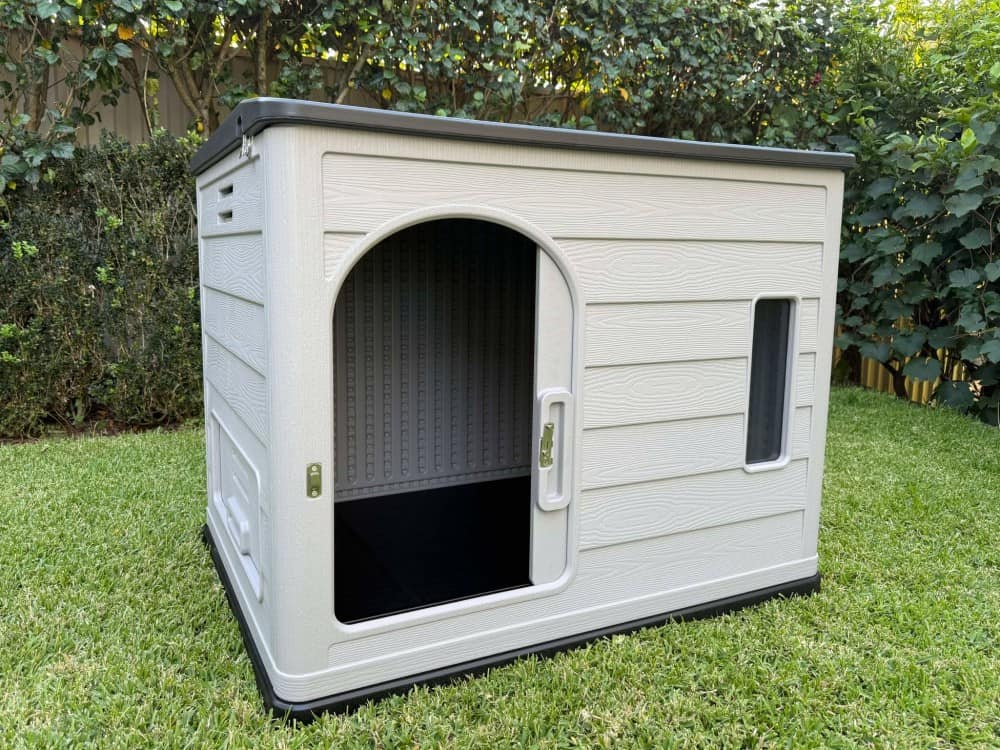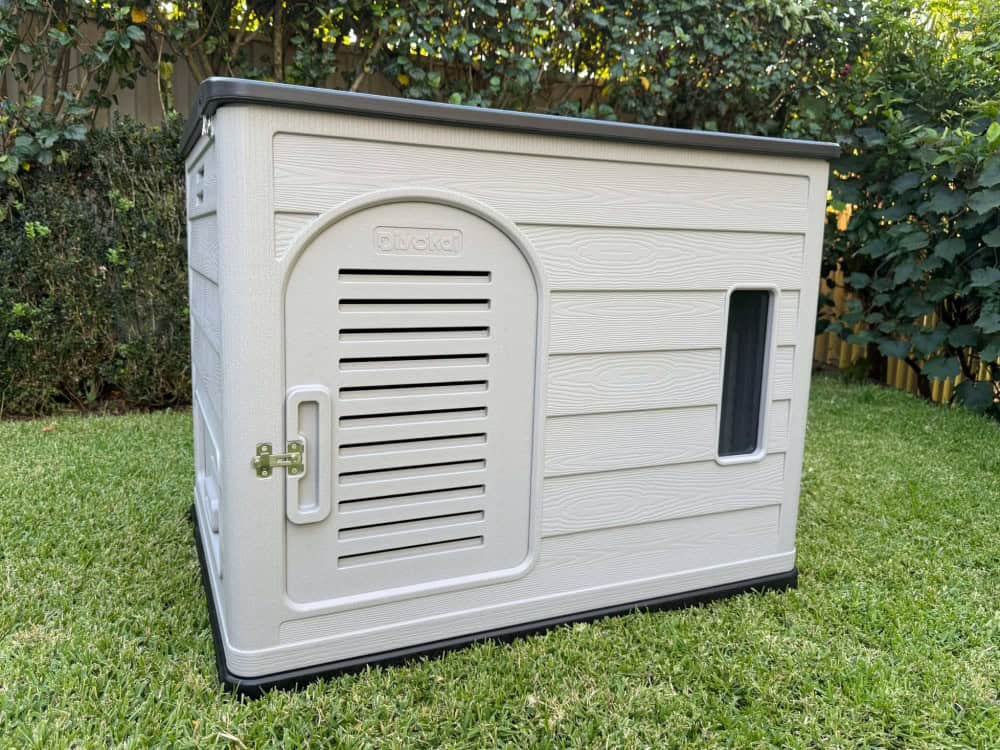If your dog sleeps outdoors in a kennel, you may worry about them being too cold overnight, especially during the colder months.
Are they warm enough? How cold is too cold for a dog to sleep outside? Do they need to sleep indoors over winter? These are common concerns for pet owners.
One of the best ways to give yourself peace of mind while keeping your dog comfortable year-round is by insulating their dog kennel. Proper insulation will help keep your dog at a comfortable temperature overnight, helping them stay warm in winter and cool in summer.
Key Takeaways
-
In Australia, most dogs can sleep outside in a kennel during winter. But it can depend on the individual dog.
-
Insulated kennels help keep your dog warm by preventing body heat from escaping.
-
You can insulate a dog kennel by adding bedding, a cover over the roof or attaching non-toxic insulation panels.
-
All Somerzby dog houses are made from either timber or double-walled plastic which act as an insulator.
Can Dogs Sleep Outside in a Kennel in Winter?
As a general rule, temperatures below 0°C are too cold for most dogs to sleep outside. Once it drops below this temperature, there is an increased risk of hypothermia, which in severe causes could potentially be life-threatening.
However, every dog is different and there are multiple factors that can influence the temperature your dog can handle:
Dog Breed
Some breeds are built for winter. Dogs like Siberian Huskies, Alaskan Malamutes, Saint Bernards, Shiba Inus, and Newfoundlands are bred for colder climates and can handle lower temperatures more comfortably.
Dogs with smaller, floppy ears, such as Beagles and Labrador Retrievers, lose less body heat compared to those with large, erect ears, such as German Shepherds and Chihuahuas.
Coat
Dogs like a Border Collie have a thick, double coat that acts like a built-in jumper, helping them retain warmth. Breeds with short or thin coats may struggle to stay warm outdoors, and hairless dogs should never sleep outside, regardless of the season.
Dark-coated dogs may also absorb more heat from sunlight, helping them to stay warm in cooler months.
Size
Larger dogs tend to carry more body fat, which helps insulate them and retain warmth. Smaller, skinnier dogs often lose heat quickly and may not cope well outdoors in winter.
Age
Puppies and senior dogs both have difficulty regulating body temperature. Most owners wait until a dog is at least six months old before letting them sleep outside, and then bring them indoors again as they age.
Health
Underlying health conditions can also make outdoor sleeping unsafe. Dogs with arthritis or other joint issues often experience more pain in the cold and will be more comfortable sleeping indoors during winter.
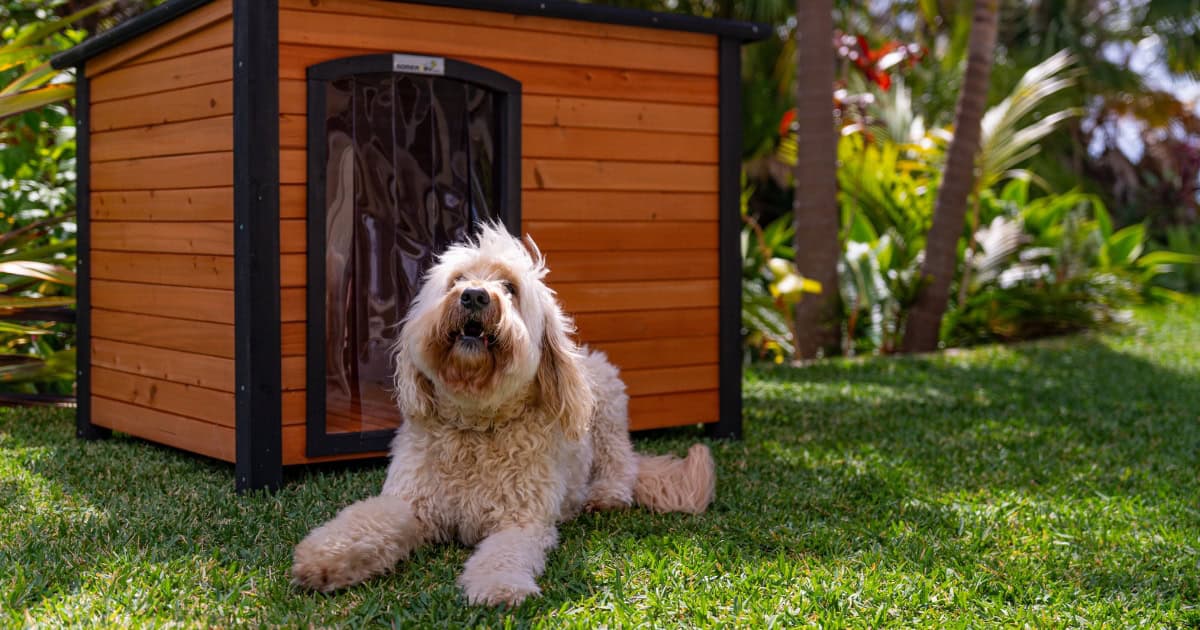
Will an Insulated Dog House Keep My Dog Warm?
Yes, an insulated dog house can make a drastic difference in keeping your dog warm during winter and cooler in the summer. Insulation helps regulate the internal temperature of the kennel by reducing heat transfer between the inside and outside. This means it stays warmer on chilly nights and prevents overheating on hot days.
If you have an existing kennel, you can add insulation yourself. Alternatively, you can buy a pre-insulated kennel.
How to Insulate a Dog Kennel
If your dog already has a kennel at home, there are several ways you can improve its insulation to keep them warmer during cold weather:
Blankets and Bedding
Lining the floor with warm, thick dog bedding creates a cosier environment and helps your dog retain body heat. The added layers reduce the internal space, allowing your dog’s natural warmth to heat the area more effectively.
Adding a Cover
Adding a durable cover over the top of the kennel at night can help block wind, rain, and draughts, especially if there are small gaps in the timber, around windows, or where the roof joins. A simple and effective method is to place an old towel or blanket over the kennel first, then cover it with a weather-resistant tarp.
Ensure it’s securely fastened but never fully covering the entrance as your dog must be able to enter and exit freely, and ventilation is still important.
Insulation Panels
For a more long-term solution, you can install insulation panels on the inside walls and roof of the kennel. Suitable materials include rigid foam boards, timber panels, or reflective insulation. However, it is crucial to avoid materials that could splinter or be chewed and ingested. Make sure you opt for non-toxic, pet-safe options, and always install panels in a way that hides edges to prevent injuries.
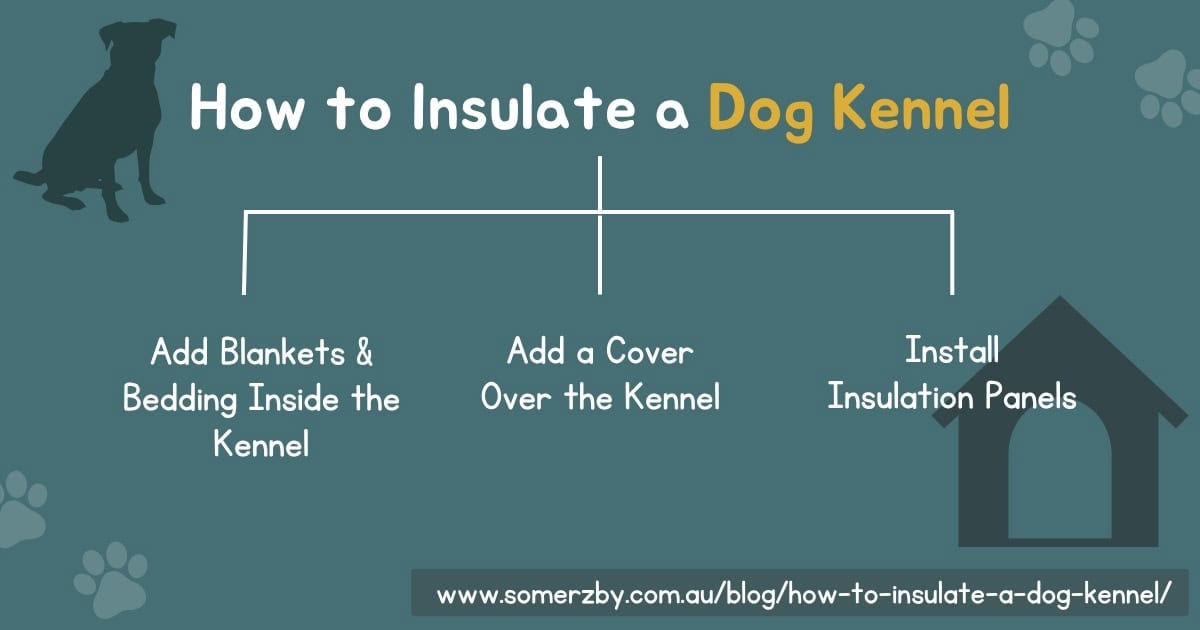
Other Tips
Besides adding insulation, here are a few more things you can do to keep your dog’s kennel warm and comfortable during cold nights:
Change the Location
Consider where the kennel is placed in the yard. In winter, positioning the kennel in a spot that gets direct sunlight during the day can help it absorb natural warmth. Additionally, placing it near a wall or fence can also provide extra shelter from wind and frost.
Elevate the Floor
Raising the kennel off the ground will help prevent cold and damp from seeping in through the floor. Even a small gap can help reduce heat loss. You can elevate the kennel using bricks, concrete pavers, timber pallets, or by attaching stable legs. Just make sure it remains level and secure, with no risk of tipping or wobbling.
Best Insulated Dog Kennels
Save yourself any hassle and purchase a quality, pre-insulated dog kennel.
When choosing a kennel, consider the size of your dog carefully. A kennel that is far too large for your dog will make it difficult to warm the space with his body heat.
Timber Kennels
At Somerzby, we offer a range of sturdy, flat-packed timber kennels in multiple sizes. Timber is a natural insulator due to the tiny air pockets within the wood that help reduce heat loss, keeping your pet warm and protected through the seasons.
All of our timber kennels are elevated off the ground to prevent direct contact with cold surfaces.
Plastic Kennels
At Somerzby, our plastic dog houses are built with double-wall insulation. The air gap between the two plastic layers acts as a thermal barrier, helping retain warmth and block out the cold.
FAQ
Can dogs sleep outside in winter in Australia?
Yes, most Australian climates are warm enough for dogs to sleep outdoors all year round, as long as they can access a quality kennel for protection from external factors such as the wind, rain and cold.
However, this depends on your dog’s individual characteristics, such as their breed, size, coat thickness, age, and health.
Should a dog kennel be insulated?
Absolutely. If your dog sleeps in their kennel overnight, insulation is strongly recommended. Choose a kennel made from timber or double-walled plastic to help regulate temperature. Add bedding, blankets, and a protective cover to maximise warmth and comfort.
What to put in dog houses to keep them warm?
Keep your pets warm overnight by filling their kennel with blankets and bedding. To save money on buying new bedding, you could use old towels, doonas or blankets you no longer use. Just be sure to keep everything dry and clean to avoid mould.
Toni’s Wrap
Most dogs can sleep outside in a kennel in Australia during winter. But all dogs have individual needs and it depends on their breed, coat type, size, age and health.
An insulated dog house will help keep your dog warm by preventing body heat from escaping.
To insulate an existing kennel, add bedding inside, a cover over the top and consider installing insulation sheeting. You can also change the location of the kennel and elevate it higher off the ground.
Save time and purchase an insulated flat packed dog kennel from Somerzby. Our timber kennels are made of wood, which is a natural insulator, while our plastic kennels are double-walled to prevent heat from leaving the internal space.




